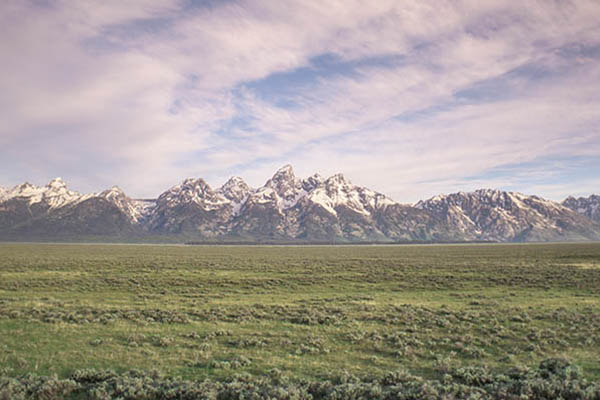
Most of Grand Teton's elk have migrated south to the National Elk Refuge where they will remain until spring.
Cold temperatures and snowfall have Grand Teton’s wildlife utilizing all of their incredible adaptations to navigate and survive the harsh winter season.
- Moose use their long legs to move through deep snow to areas of preferred forage. Moose calves remain with their mothers through the winter and follow behind them while trail breaking through the snow. Moose also use their highly developed sense of smell to find only the most nutritious parts of shrubs under the snow.
- Hibernating animals, such as black and grizzly bears, benefit from deepening snows, which provide better insulation.
- Bison use their massive heads, thick skin, and muscular necks to move snow from side to side, creating craters where they can access buried forage.
- As days gradually lengthen, ravens, bald eagles, and great horned owls—some of the area’s earliest nesters—begin courtship activities.
- Wolverines, Canada lynx, and wolves remain highly active, using large, snow-adapted feet to move through the environment.
- Like the mother moose and her offspring, wolves also travel in single file lines through deep snow for efficiency.
- Moose have begun congregating in areas where bitterbrush is abundant, such as the sagebrush flats near the Jackson Hole Airport and north of the town of Kelly.
- The American dipper, also known as the water ouzel, remains highly active all winter, seeking areas of open, moving water where they bob on rocks between dives for aquatic insects.
- Teton range bighorn sheep hunker down on small, high elevation ridges blown free of snow. Please obey posted closures designed to protect them and other wildlife during winter, and give them a wide berth if you are lucky enough to happen upon them in other areas.
- Our cold water fish are supremely adapted to surviving winter, often under the ice for months at a time. Nevertheless, like other wildlife winter is stressful for fish. Sport fishing opportunities in the park are limited during winter to help reduce undue stress on fish.
- Deeper snow in the high elevations is starting to bring many deer, elk, and moose to the lowest elevations of the park and Jackson Hole. Many of these animals are not used to being in such close proximity to people, which can add considerable stress and lower fitness.
- Please consider the space and energy conservation needs of wildlife during winter and don’t approach them closely, even though they may “appear” unconcerned. In many cases, they simply have no where else to go until snow depths decrease.










